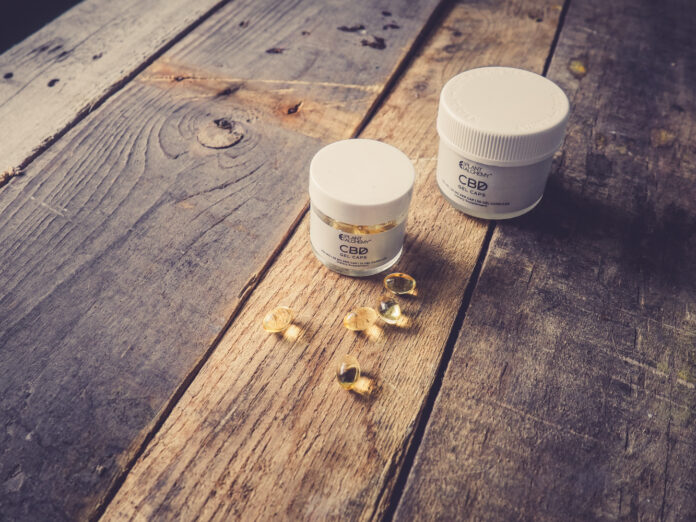Our bodies are in constant struggle between anabolism, building itself up, and catabolism, breaking itself down. When it detects too much of either, it appears and almost as rapidly, it disappears to nudge the body back to homeostasis. ECS is a system that does not store up its main components but creates it on demand. The extreme complexity of how this is done is what attracted scientists over the past 20-30 years. By modulating other systems the ECS, in theory, regulates inflammation, pain, bone health, formation of new nerve cells, fat and sugar processing, mood, energy, brain health, and hormone levels.
The ECS is a modulatory biological system that is composed of receptors signaling molecules and enzymes. Some other systems you may be familiar with are the endorphin system, immune system, and the vanilloid system (the system that transforms acute pain into chronic pain). The ECS is responsible for two basic functions:
- Modulating pleasure, energy, and overall well-being; and
- Introducing homeostasis back in the body after it has faced injury or disease.
CBD
CBD is the second most prevalent molecule found in the cannabis plant. While CBD is an essential component of the marijuana plant, it is directly derived from the Hemp plant, which is a genetic cousin of the marijuana plant. CBD has grown in popularity as it has undergone a significant amount of research for its potential therapeutic benefits that may include relief from inflammation, stress, sleep, and anxiety properties. Before cannabis was sold, distributed, and grown as it is today, it was a 1:1 plant — meaning cannabis had a much closer THC to CBD ratio than it does today. Some cannabis users may have noticed that if they ingest CBD after consuming marijuana or THC, it significantly reduces the psychoactive effects while still allowing for relaxation and minor sedation.
Cannabinoids
Granted, CBD and THC has received most of the spotlight up until now; however, over the past few years other cannabinoids have been coming out of the woodworks so to speak and are being given attention for their potential abilities to address cognitive, gastrointestinal, musculoskeletal, and even immune system concerns. Some of these include CBN (cannabinol), CBG (cannabigerol), CBC (cannabichromene), and CBDA (cannabidiolic acid), to name a few. Imagine that there are approximately 100 known cannabinoids known and it is said that there may be double that yet to be discovered.
CBN
Originally, it was thought that CBN was the main compound in cannabis that was responsible for the buzz and sedation. Interestingly, CBN is not produced because of ingesting the cannabis plant, whether it is hemp or marijuana. Rather, CBN is the result of oxidation, degradation, and UV exposure. Unlike its molecular cousin THC, CBN produces perhaps 1/10th the psychotropic effect. One of the most studied and utilized facets of CBN are its sedating properties. Many individuals take advantage of this effect for sleeping issues by utilizing products that are rich in CBN such as sleepwell by plant alchemy. They also report that they do not have the next day grogginess associated with some OTC options or supplements such as melatonin.
Understanding Cannabinoid Usage
Regardless of the cannabinoid used, there are three very important factors to be aware of and understand:
- Delivery Method;
- Bioavailability; and
- Dosage.
In regard to ingestion and bioavailability, ingesting CBD via inhalation such as smoking offers the benefit of high bioavailability and an immediate effect, but it does have a shorter duration of approximately 2–4 hours. However, ingesting a CBD Gel Cap such as those from Plant Alchemy takes approximately 45 minutes to 1 hour to take effect, but it will last between 6 and 8 hours. Administering CBD sublingually under the tongue offers relatively fair bioavailability and absorption, and it has a duration of approximately 4-6 hours. One method of delivery of CBD that has gained more popularity over the past 5 years or so has been topical. CBD applied topically does not enter the blood, but it does reduce inflammation and muscle tension via a number of receptors. A soothing, cooling balm applied topically may provide much needed relief to those suffering from a broad spectrum of ailments, such as sports injuries to more chronic pain such as arthritis.
As mentioned earlier the dosage of CBD contributes to effect as well. Up to 25mg can be considered a lower dose and potentially offers considerable stress relief; 25-50mg may help with pain and inflammation; and 50mg and above can offer some relief for those having difficulty falling asleep. Plant Alchemy offers cannabis hemp-based products of the highest and utmost quality.
Furthermore, not all specific cannabinoids are to be taken at equal dosages. CBD is generally consumed starting at 2–5mg and can go up to 200mg in a single dose. CBN is commonly taken at an introductory dose of 5mg, but it is not uncommon to go up to 20mg. CBG is commonly taken in a variety of dosages upwards towards 75mg in a single serving. THC can begin at a microdose of up to 2.5mg, but it can go all the way to 50–200mg in a single dose.
In Summary
Cannabis possesses a plethora of healthy and therapeutic compounds. The goal is to view the cannabis plant not as a single compound such as CBD or THC that can help with everything, but more so to view this amazing fascinating plant as an entire pharmacy of compounds that offers hundreds if not thousands of potentially therapeutic properties.
Find a Home-Based Business to Start-Up >>> Hundreds of Business Listings.
















































